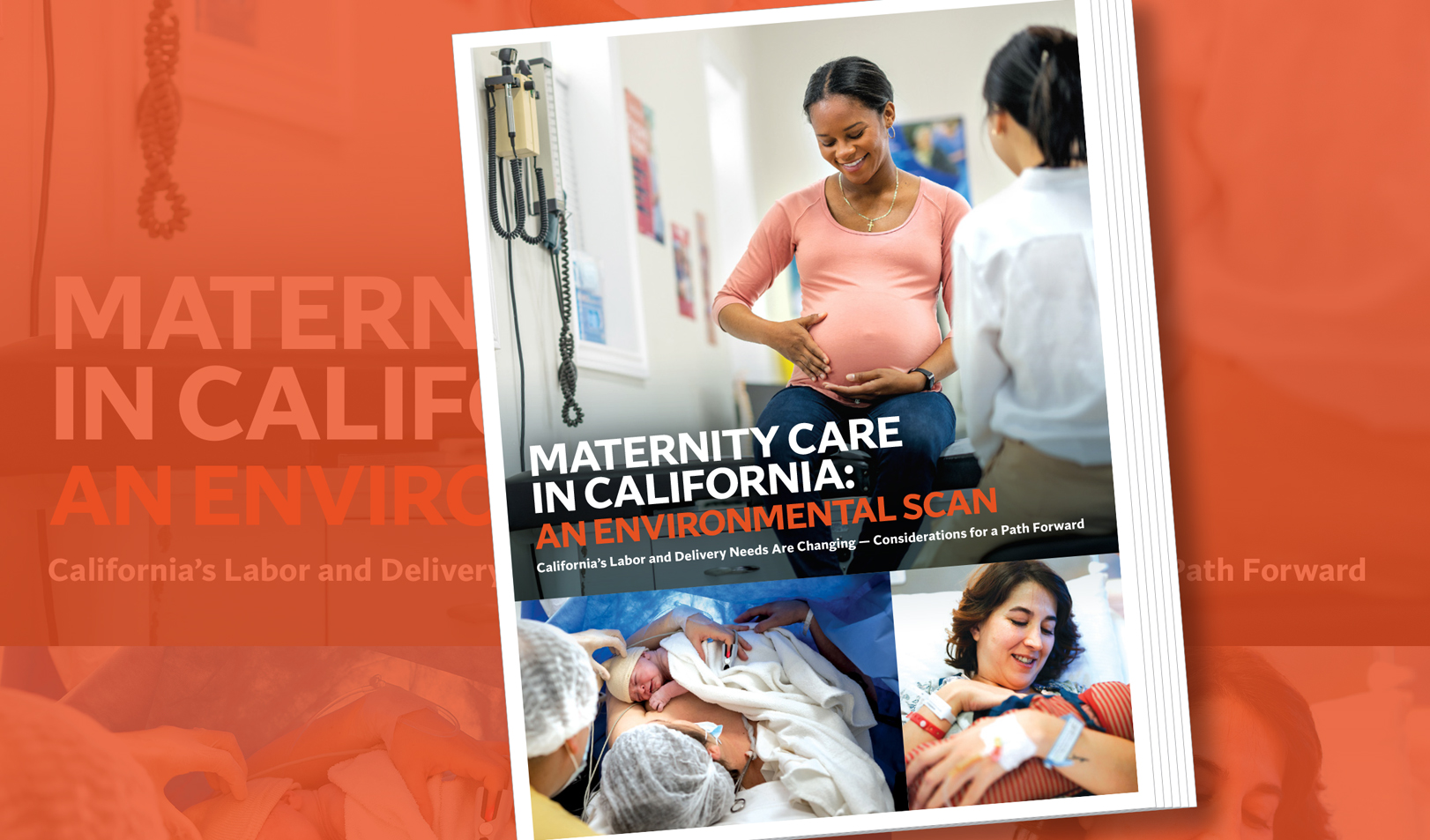The newsroom includes access to CHA News, which provides timely information to members every Thursday and is at the core of CHA benefits. In addition, it is also home to resources such as toolkits and talking points designed to help member hospitals and health systems communicate with internal and external audiences on a range of current health care-related issues. Links to CHA media statements and press releases can also be found here.
Newsroom
Federal Administration Issues Short-Term, Limited Duration Health Plan Final Rule
Today, the U.S. Departments of Treasury, Labor, and Health and Human Services issued the short-term, limited duration insurance final rule, which finalizes many of the changes in the proposed rule and modifies proposals in other areas. While the three departments finalized the less than 12-month length of the policy as proposed, they changed the total length of the policy to no longer than 36 months in total, taking into account renewals or extensions, based on comments received.
The final rule also retains the requirement that issuers of short-term, limited-duration insurance display prominently in consumer materials one of two versions of a consumer notice explaining the policy that they are purchasing. The departments also strengthened the language required in the notice and included language deferring to state authority. Finally, the departments revised the estimates of the impact of short-term, limited-duration coverage on the individual health insurance market. The final rule is effective and applicable 60 days after publication in the Federal Register. In California, legislation has been introduced — Senate Bill 910 (Hernandez, D-West Covina) — that would prohibit short-term, limited duration health plans from being sold in California.
CHA Highlights Major Provisions of CY 2019 OPPS Proposed Rule
Yesterday, the Centers for Medicare & Medicaid Services (CMS) released the outpatient prospective payment system (OPPS) proposed rule for calendar year (CY) 2019, which also includes payment updates for ambulatory surgical centers (ASCs).
House Ways and Means Committee Holds Hearing on Modernizing Stark Law
Yesterday, the House Ways and Means Committee, Subcommittee on Health held a hearing on the Stark Law. The hearing examined the need to modernize the physician self-referral law, as well as possible solutions that would facilitate the Medicare program’s successful transition to value-based care. Witnesses urged Congress to amend the existing law to reflect modern care practices.
Last month, the Centers for Medicare & Medicaid Services (CMS) issued a request for information on how the Stark Law impedes care coordination and recommendations on how to address its burdens. CHA is soliciting input from members about the request for information; comments are due to CMS by 2 p.m. (PT) on Aug. 24.
CHA Provides Details of CY 2019 Physician Fee Schedule Proposed Rule
The Centers for Medicare & Medicaid Services (CMS) yesterday released its proposed rule updating the Medicare physician fee schedule (PFS) and other Medicare Part B payment policies for calendar year (CY) 2019. The proposed rule includes a number of significant proposals that will impact hospitals and clinicians. While CHA will release a detailed summary of the proposed rule in the coming weeks, key provisions are highlighted below. Comments on the proposed rule are due Sept. 10.
Payment for Non-Excepted Off-Campus Provider Departments: As required by Section 603 of the Bipartisan Budget Act of 2015, CMS pays for items and services furnished at certain off-campus hospital outpatient provider-based departments under a PFS relativity adjuster of 40 percent of the amount that would have been paid for those services under the outpatient prospective payment system. For CY 2019, CMS proposes to maintain the current PFS relativity adjuster at 40 percent.
Evaluation and Management (E/M) Burden: CMS proposes a number of coding and payment changes to reduce the administrative burden and improve payment accuracy for E/M visits. Among the changes, CMS proposes to expand options on how practitioners choose to document E/M visits using medical decision-making or time instead of applying the current documentation guidelines. Practitioners would be allowed to review and verify certain information in the medical record entered by ancillary staff or the beneficiary, rather than re-entering the information themselves. CMS also proposes to establish a new, single blended payment rate for new and established office and outpatient E/M level 2 through 5 visits.
CHA Submits Letter to HHS on 340B Program
CHA has submitted the attached letter to the Department of Health and Human Services in response to the 340B section of its Blueprint to Lower Drug Prices and Reduce Out-of-Pocket Costs.
In the letter, CHA argues that the administration’s focus on the 340B drug discount program as part of a plan to lower drug prices is misplaced. CHA describes the importance of the 340B program in providing essential medications and access to health care for California’s most vulnerable populations.
To highlight the program’s importance, CHA offers specific examples of how California’s hospitals have used the savings from the program to fund vital patient care services — including mobile health clinics, chemotherapy infusion centers, Hepatitis C treatment and inner-city primary care centers.
CHA encourages members to use the letter as a template to submit their own comments. Comments are due Monday, July 16 by 2 p.m. (PT) and may be submitted online.
CMS Requests Information About Stark Law’s Impact on Care Coordination
The Centers for Medicare & Medicaid Services (CMS) has issued the attached request for information (RFI) seeking recommendations on how to address the burdens of the physician self-referral law – also known as the Stark Law – as well as feedback on how the law impedes care coordination. CMS notes it is particularly interested in information about the structure of arrangements between parties that participate in alternative payment models or other novel financial arrangements; the need for revisions or additions to exceptions to the physician self-referral law; and definitions of terminology related to alternative payment models and the physician self-referral law.
Responses to the RFI are due by Aug. 24. Additional information is available on CMS’ website.
‘Extreme and Uncontrollable’ Circumstances Policy Finalized for CJR Hospitals
The Centers for Medicare & Medicaid Services (CMS) finalized, without changes, its “extreme and uncontrollable” circumstances policy for hospitals participating in the Comprehensive Care for Joint Replacement (CJR) Payment Model, previously set forth in an interim final rule.
The attached final rule provides flexibility in determining episode spending for CJR hospitals located in areas impacted by a major disaster declaration for performance years three through five. The policy will become effective July 9.
CMS determined at least 22 CJR hospitals were located in areas affected by the Northern California wildfires, which include Butte, Lake, Mendocino, Napa, Nevada, Orange, Sonoma and Yuba counties. The extreme and uncontrollable policy will apply to CJR participant hospitals whose CMS certification number has a primary address located within an area that has been issued a waiver in accordance with section 1135(g) of the Social Security Act and is in a county, parish or tribal government with a major disaster declaration under the Stafford Act.
CHA Comments on Direct Provider Contracting Model Request for Information
CHA has prepared the attached comment letter on a potential alternative payment model that would allow direct provider contracting between payers and primary care or multi-specialty groups within the Medicare fee-for-service, Medicare Advantage and Medicaid programs. Responding to a request for information from the Centers for Medicare & Medicaid Services (CMS), CHA’s comments provide a number of guiding principles for the development of alternative payment models, including some specific considerations for direct provider contracting models. In addition, CHA urges CMS to carefully review additional comments submitted by providers in California, who for decades have been leaders in managing primary and specialty care through multiple public and private sector initiatives. Members are encouraged to use CHA’s letter to develop their own comment letters, due May 25.
CHA Submits Joint Letter on Medicaid Access to Care Monitoring Requirements
The California Hospital Association, the California Association of Public Hospitals and Health Systems, Private Essential Access Community Hospitals, Inc., the California Children’s Hospital Association and the District Hospital Leadership Forum have submitted the attached joint letter on the Centers for Medicare & Medicaid Services (CMS) proposed rule on fee-for-service access to care monitoring requirements within the Medicaid program. The proposed rule would amend the process by which states document whether Medicaid payments in fee-for-service (FFS) systems are sufficient to enlist providers to assure beneficiary access to covered care and services consistent with existing statute.
In the letter, the organizations oppose an exemption from the FFS access standards, regardless of the managed care penetration rate, as it eliminates safeguards that promote a more transparent data-driven process. The letter also outlines concerns with proposals related to an exemption for states with high managed care enrollment, exemptions for nominal rate reductions, relief from public notice of rate reductions and the need for greater CMS oversight of state Medicaid programs.
Comments on the proposed rule are due by 2 p.m. (PT) on May 22.
Trump Administration Releases Blueprint to Lower Drug Prices
President Trump last week released a blueprint that identifies immediate actions and further opportunities within federal payment programs to lower drug prices. In releasing the blueprint, officials from the Department of Health and Human Services identified four major goals:
Addressing the increase in list prices of drugs
Maximizing the potential of government programs and private payers to leverage negotiating power
Tackling high out-of-pocket costs
Ensuring the practices of foreign markets are not disadvantaging American innovation
The Blueprint to Lower Drug Prices and Reduce Out-of-Pocket Costs calls for greater transparency of drug prices, better informing consumers about prescription drugs, promoting the use of generic drugs and experimenting with value-based payment through the Center for Medicare & Medicaid Innovation. CHA is reviewing the blueprint’s policy proposals and anticipates additional rulemaking and subregulatory guidance to be released over the coming weeks. Today, the department released a request for information seeking stakeholder feedback to “to help shape future policy development and agency action.” Future member engagement on these important policy issues is likely.

